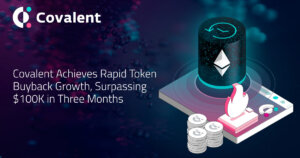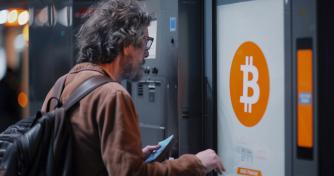 Nexo founder on importance of crypto lending insurance and the differences between the 2017 and 2020 Bitcoin bull run
Nexo founder on importance of crypto lending insurance and the differences between the 2017 and 2020 Bitcoin bull run Nexo founder on importance of crypto lending insurance and the differences between the 2017 and 2020 Bitcoin bull run

Cover art/illustration via CryptoSlate. Image includes combined content which may include AI-generated content.
CryptoSlate recently had the opportunity to chat with the Managing Director of Nexo, Antoni Trenchev.
Nexo is a leading digital asset company best known for providing the world’s first instant crypto credit lines. Prior to catching the blockchain bug in early 2013, Trenchev studied finance law at King’s College London and Humboldt University of Berlin. After college, he worked in the hedge fund industry before turning his attention to financial technology, becoming the chief innovations officer at Credissimo, a European fintech group specializing in online consumer lending that was an early backer of the Nexo enterprise.
As a member of Bulgaria’s parliament, Trenchev advocated for progressive legislation to enable blockchain solutions for a variety of e-government services, most notably e-voting and the storage of databases in a distributed ledger.
In the interview we discuss:
- How Trenchev got started in crypto
- Why Nexo’s management team operates out of London
- Nexo’s notable achievements and product roadmap
- Why and how Nexo offers insurance on user funds
- How Nexo is working to prevent a similar loss-of-user-funds incident as the one that happened at Cred
- Biggest challenges of building a crypto lending platform
- What blockchain developments Trenchev is most excited about
- Trenchev’s crypto predictions for 2021 and beyond
- Biggest obstacles for mainstream adoption
- Differences between the 2017 and 2020 Bitcoin bull run
- Trenchev’s most controversial opinion relating to blockchain
Disclaimer: Nexo is an advertising partner for CryptoSlate but this is not a sponsored post.
Interview with Antoni Trenchev, Nexo Co-founder and Managing Partner
What is your professional background and how/when did you get into crypto?
Before entering the blockchain space in 2011, I studied Finance Law at King’s College London and Humboldt University, Berlin, and then worked in the hedge fund industry. Having always had a concurrent interest in all things tech, I gradually got involved in fintech and quite naturally became a crypto enthusiast.
My belief in blockchain’s potential for positive change led me to run for office in my home country, Bulgaria, where I served as Member of Parliament between 2014 and 2017, advocating for progressive legislation to implement blockchain solutions for e-government services, including e-voting and storage of databases in a distributed ledger.
My experience over those few years gave me a well-rounded vision of what finance and the economy of the future should look like, and I wanted to be part of shaping that future. I joined the leadership team that launched Nexo in 2017 and shortly after, we made the first steps in that direction by launching the platform in April 2018. We now manage $2 billion in assets for over a million users worldwide and actively push for mass crypto adoption by making our offering ever-broader and more accessible and acting as a spokesperson for the space.
Where is your team located and why did you choose that jurisdiction?
Оur management team mostly works out of London, where our headquarters are. Besides London’s growing fintech and crypto scape, this makes a lot of sense for us as we’re a global business – we can easily hop on a plane and get just about anywhere.
Having said this, and considering the fact that we serve over 200 jurisdictions, we have offices all over the world, including in Switzerland, the US, and in my home country, Bulgaria, where some of our key operations, like our Communications and our Customer Support teams are primarily based.
How does Nexo decide which crypto assets to list on its platform?
Like any sensible business, we strive to create the products that our clients want and need. At the same time, we make sure to protect our clients and the business. Because of this, we have approached the integration of new assets to our platform in two ways.
The first is by asking our community to vote for the asset they wish to see next on Nexo. We initially conducted such polls on the Nexo website and we have now extended the practice to asking our Twitter community about the assets they use and want to see integrated.
Our in-house specialists also play a big part in selecting new assets for integration. Our team is great at identifying legitimate cryptocurrencies and digital assets with progressive characteristics and growth potential. These are the assets we are eager to support.
In approaching asset integration like this, we provide our clients with quality services that they’ve already confirmed they want, ensure the safety and legitimacy of our platform, and propel the adoption of crypto.
What are some of Nexo’s notable achievements and/or milestones?
When we launched Nexo in 2018, we were the first company to provide instant crypto credit lines, basically carving out the market niche. This was our first accomplishment and one we’re still extremely proud of. We also backed the first mortgage in crypto, so Brock Pierce could purchase a house — that was a huge step both for us and for the space.
We’re not ones to rest on our laurels though and we’ve been on quite a roll since. Over the past few months alone, we launched our Earn on Crypto & Fiat suite, distributed our third dividend, which brought the total funds Nexo has shared through dividends to $9.5 million, and started Nexonomics — a comprehensive tokenomics overhaul, which came with interest rate bumps for Earn, an Earn in NEXO option, a new loyalty program, and most recently — a $12 million buyback program.
Thanks to these efforts, we now boast industry-best yields on most cryptocurrencies, stablecoins and fiat, our native NEXO token’s price has risen by over 185% since the launch of Nexonomics, and we presently manage $2BN in assets for over 1M users, across 200 jurisdictions. This is up until now — we have more launches and announcements coming up by the end of 2020.
What are the benefits of using Nexo as opposed to other crypto lending platforms?
When compared to a number of other players in the blockchain space, we have a sustainable business model that makes sense, that is based on best practice from traditional finance — an industry that is as old as time. Within the management team of Nexo alone, we probably have a century’s experience in finance between us, and Nexo’s model is based on the best of that experience.
We are self-sufficient in that we don’t rely on venture capital, i.e. access to cheap and easy money. In contrast, there are players in our space that have taken the worst out of traditional finance — those who have billions of transactions, yet at the same time, their CEOs take unsecured loans from their own companies to, say, buy houses in prime locations. Those companies are often on the verge of bankruptcy, needing fresh capital every few months to keep the house of cards upright. A more colloquial term for this is a Ponzi scheme.
But unlike most of our competitors, we maintain our policy of only lending on an over-collateralized basis, because this ensures we protect both our clients’ assets and our business, making us sustainable in the long term and accountable for our footprint in the blockchain space. This is because we believe that, ultimately, it is the sustainable companies that will emerge as the next Amazons, the next Googles, and the next Apple. Those who share this belief and have the patience and realistic expectations of what is possible will be the ones like those who bought Apple in ‘97 for a dollar a share.
That’s the holistic view. If we are to go into the details of our products, our sustainable business model means that our Instant Crypto Credit Lines continue to dominate the industry with their flexibility and low rates. We charge 5.9% and allow clients to withdraw as much or as little funds as they want from their available credit, while only getting charged interest on what they actually use. To the best of my knowledge, currently, we are the only lender that offers dynamic credit lines as opposed to loans that saddle users with a series of commitments.
When it comes to savings accounts, we offer both the best rates in the industry – up to 12% – and the most advanced security for digital assets, so keeping funds with us is a real no-brainer. As explained in answers to your other questions, we have top-tier insurance and military-grade security for the Nexo Wallet and stringent lending policies — all assets held with us are backed by our 200-500% overcollateralized credit lines, which, on top of all the security measures and insurance, guarantees the safety of your funds through the oldest, and most sustainable trick in the book.
What can you tell us about the Nexo product roadmap? What upcoming features are you most excited about rolling out?
I’m really excited to say that Nexo will soon be launching our very own internal exchange. It will allow our users to trade between various assets without having to leave the Nexo platform.
This is something our community has been asking for for a long time, and we’re on the last stretch of its development, so be on the lookout for the announcement.
Alongside the exchange, we have more Nexonomics releases coming up, which aim to further boost the utility and growth potential of the NEXO Token and are preparing for the release of the Nexo Card. In the mid-to longer term, we are also developing our prime brokerage suite and working towards acquiring bank licenses, which will allow us to offer 360-degree commercial banking services.
Does Nexo offer insurance on user funds?
“Safety first” is a key principle in financial services, especially in a new industry like crypto and digital finance where we don’t yet have the full perspective on all the possibilities and vulnerabilities. This is why insurance is a must at Nexo. We presently get ours through BitGo, who is a leader in crypto custodianship. In addition to providing us with 100% cold storage, BitGo provides top-tier insurance for all assets held at Nexo through Lloyd’s of London.
With so many hacks and examples of poor financial practices making the headlines in our space, it should be obvious to all by now how unfortunately things can end when you forgo insurance and proper security. In addition to using BitGo, we only lend on an overcollateralized basis, conduct thorough KYC via our partner Jumio, and have very strict security measures in place internally. We’re currently also finalizing deals with additional wallet management solution providers, which will further boost our insurance and the security of our clients’ assets, аs well as looking into setting up a proof-of-reserves mechanism to give clients additional reassurance.
Although many of our partners have classified us as a “boring Swiss bank” due to our strict policies with regard to security and risk management, I’m quite proud of the example we’re setting and am confident that, as the “wild west” days of crypto come to an end, it will be an example that leads the industry into a bigger, better, and more sustainable future. We have never been hacked, which goes to show that “being boring” works. On a personal note, it helps me sleep at night knowing that our clients and the business I’ve contributed to building over the past three years are protected.
Given what happened to crypto lending platform Cred recently, how would Nexo prevent a similar event from happening?
Cred created quite a ripple in the crypto lending industry, there’s no doubt about it. The loss of trust that ensued from this case has, I’m sure, negatively impacted every single player in our field, as well as the space in general. On the positive side, it’s a case that should unite the industry — we now have an even greater responsibility to rebuild this trust and must each do our bit towards this, as it is a setback for mass crypto adoption, which should be the goal for every participant in our space.
Let me expand on the topics I touched upon in the previous question to highlight why Nexo sets a good, if not the best, example with regard to security and why a Cred scenario is so highly unlikely.
Unlike most of our competitors, we maintain our policy of only lending on an over-collateralized basis because this ensures we protect both our clients’ assets and our business, making us sustainable in the long term and accountable for our footprint in the blockchain space.
To keep operations in line with our mission and policies, the safety of our clients’ funds must be a top priority. This is why our cold storage wallets are kept in bank-grade Class III vaults, provided by BitGo, whose platform is SOC 2 Type 2-certified. This is further enhanced at Nexo’s end by authentication features such as biometric-based identity verification and segregated multi-signature cold wallets.
We work with leading custodians including BitGo to guarantee top-tier insurance amounting to over $100M, so that whether it is a third-party hack, an insider theft, or whether private keys are lost or copied, the funds kept with us remain protected. Additionally, we are in the advanced stages of further growing our custodian partners and significantly increasing the insurance coverage on clients’ assets.
Our information security management system (ISMS) has been successfully audited by CISQ, a member of IQNet and the world’s largest provider of management system certification, and by RINA, who have decades of experience in certifications, ensuing in an ISO/IEC 27001 compliance certificate. This guarantees that our security infrastructure is of the highest standard and carries minimal risk to clients and investors thanks to rigorous security policies, impeccable risk assessment, data protection, and state-of-the-art cybersecurity.
Our own extensive firewall server architecture, combined with a stringent Employee Access Policy built on conditional enrollment and compliance status-based access to applications, multi-factor authentication (MFA), and step-up authentication, further ensure that no breaches to our infrastructure occur. Our staff also undergo regular cybersecurity workshops to keep them up to speed with the latest security threats. To prevent so-called “insider jobs”, very few employees have access to clients’ assets and even for those that do, MFA and step-up authentication ensure that no employee can act individually and in isolation to the established chain of command.
Additionally, to comply with international “know your customer” (KYC) and anti-money laundering (AML) regulations and protect our clients’ assets, we verify account holders’ identities. While this is a requirement for traditional financial institutions, it is not yet one for crypto industry players. We choose to perform KYC and AML checks, and do so via our partners Jumio and Onfido – two leading identity verification providers working with global clients, including Monzo, Rappi, and HSBC — as we believe this to be best practice and fundamental to the institutionalization of the space.
Maintaining an impeccable safety and security record is key to our pursuit of a banking license, which we are in the advanced stages of acquiring. As you can imagine this requires us to have audited financials, strict internal policies, and procedures, as well as to comply with multiple regulatory requirements. With this in mind, and in light of the events preceding Cred’s Chapter 11 filing, we’re planning on setting up a proof-of-reserves mechanism to further reassure clients with respect to their assets’ security. We’ll be announcing further details soon.
Another aspect of ensuring the security of a platform that’s often overlooked is educating account holders on how to best keep their information safe and reminding them that it is as much their responsibility as ours to safeguard their accounts — we’re talking basics like using a strong password, enabling two-factor authentication, controlling all login credentials to Nexo, taking offers that seem too good to be true with a pinch of salt and, generally, having a sound understanding of both finance and technology.
What are the biggest challenges of building a crypto lending platform for crypto users?
There were a number of challenges to overcome when we were creating Nexo. The biggest one, which remains an issue in the cryptocurrency industry, was building trust in an area notorious for hacks, scams, crime and money laundering. People are understandably very hesitant to place their money into new, unknown platforms especially when few people have the technical knowledge to understand blockchain – so proving ourselves to be reliable and trustworthy has been a process and we’re pleased with our progress to date.
Additionally, building a simple and attractive user experience is important to attract and hold on to new users, cryptocurrency is a complicated industry to most everyday consumers so simplifying it, and making it usable and attractive to users has been a real challenge.
What other projects and/or blockchain developments are you most excited about?
Besides our own developments — the Nexo exchange, the card, the next installments of our Nexonomics campaign, the prime brokerage suite, and, of course — on a more macro level, Bitcoin storming through the borders of the crypto space and into mainstream finance with institutional investment behind it, what I’m especially excited about seeing over the next few months is how Defi progresses.
Defi has been the most controversial dimension of our space over the past year — on the one hand, it has witnessed exponential growth in a matter of months and, at its core, it very much epitomizes the principles that the crypto space stands for. Perhaps extremely so, but it encompasses the essence and ethos of what a crypto can bring to the world of finance — true democracy, a shared economy, power to the unbanked. At the same time, it is fraught with risk. It is not user-friendly. It needs work.
While I firmly believe in what Defi stands for, I am no idealist. It has a long way to go before it is fit and palatable for mainstream consumption — especially by way of security and UX. These are the areas in which I think Cefi and Defi can and must work together — they are not mutually exclusive, as has so often been said. They stand to gain a lot from each other and it is only in working together that they will truly benefit the crypto space and propel it into the mainstream.
In a nutshell, I cannot wait to see how Cefi and Defi strike a golden mean and the results that will follow.
Do you have any blockchain and/or crypto predictions for 2021 and beyond?
As I’ve said many times before, I’m not the biggest fan of predictions. That said I do believe Bitcoin, the biggest cryptocurrency, will go up a lot. At the start of 2020, I made a prediction that it would reach $50,000 by the end of the year. Given COVID-19 and the rather shaky economic situation, it’s only just now that Bitcoin is entering a bull run and circling the $20,000 threshold. So it may be coming with a slight delay, but I still think BTC is heading towards $50,000 and the climb to that height is not far.
Besides the previously mentioned developments that I expect and am excited to see unfold, I also feel like 2021 is the year where we will edge closer to mass adoption and, in many ways, the COVID-19 crisis has played a positive role in this respect. Many investors — primarily smart-money institutional players, but also tech and finance-savvier retail users — are looking for ways to beat inflation as governments keep pumping fiat into the economy to cushion the impact of the pandemic.
What are the biggest obstacles for the mainstream adoption of crypto?
Besides user-friendliness and security issues that make the headlines, insufficient financial literacy on the retail front is, I feel, a big impediment to mass crypto adoption.
The cryptocurrency market is still in its infancy, which brings with it both an overpowering sense of possibility and a lack of understanding. Recent surveys suggest there are two distinct groups of crypto newbies: beginners who venture into projects they don’t fully grasp, and aspirants to crypto investing who question their own capability of getting involved.
I recently came across a survey which concluded that nearly half of online investors were not trading crypto because they felt they lacked the proper education. An interesting nugget of information — the women surveyed (and they do tend to be more cautious), in particular, admitted that their lack of knowledge was the biggest barrier to entry into crypto investing, even though their interest in doing so matched men’s. Another poll, from 2019, found that U.S. investors would be more likely to invest in BTC if they were more knowledgeable about the asset, relative to stocks and bonds. This means that we’re not getting across to the critical thinkers out there — that perhaps we’re stuck in our own crypto vacuum and niche terminology, thus preventing potentially smart investors from coming into our space.
Interestingly though, those with the lowest crypto knowledge tend to demonstrate high or medium confidence in its future, which makes for an uncomfortable journey towards mass crypto adoption. Interest, whether matched by sound understanding or not, is definitely a step in the right direction, but it can backfire as those who are at a loss after making uninformed decisions take to crypto Twitter or some other social media and slam the space, with the bulk of discontent ultimately making mainstream media headlines.
This also holds true at the company level — when the businesses that are responsible for protecting their users’ funds don’t ensure their security because of insufficient knowledge (or disregard) of best practice, this casts doubt over our space. Furthermore, and considering how new crypto is and its mission to make financial tools available to all, “best practice” should entail financial education, or at least ensuring that products and services are thoroughly and transparently explained to users. A failure on either of these two will result in a setback for everyone in crypto, or at least for those of us who believe in and aim for mass crypto adoption as a better alternative to the current financial system.
On this note, I was really pleased to hear CoinMarketCap’s interim CEO Carylyne Chan say earlier this year that she was leaving CMC with the hope that it will play a “more prominent role in cryptocurrency education.” Hers is a voice of reason and we must all take heed. For the space to progress and enter mainstream finance, as it deserves to, the “quick-buck” men.
What is the biggest difference between the 2020 bull run and the 2017 bull run?
Unlike 2017, the recent BTC rally has stayed under the radar. It is different altogether, led by the larger players and institutions behind them, like Stone Ridge, Paul Tudor Jones, Stanley Druckenmiller, among others. By contrast, the 2017 frenzy and subsequent 2018 bubble burst was retail-driven, with price action intensified by the ICO phenomenon.
With smart money at the helm, the current BTC rally is looking a lot like the gold bull market of the 1970s: stealthy institutional purchases announced to the world once Bitcoin makes it into treasuries. This means we can expect small funds to also jump in, given that the whales are now in and there is no longer a need to justify these investments.
What is your most controversial opinion relating to blockchain and/or cryptocurrency?
We’re not doing anything fundamentally innovative here. Just taking the principles and best practices from the age-old industry that finance is and implementing them in a digital dimension.
































































